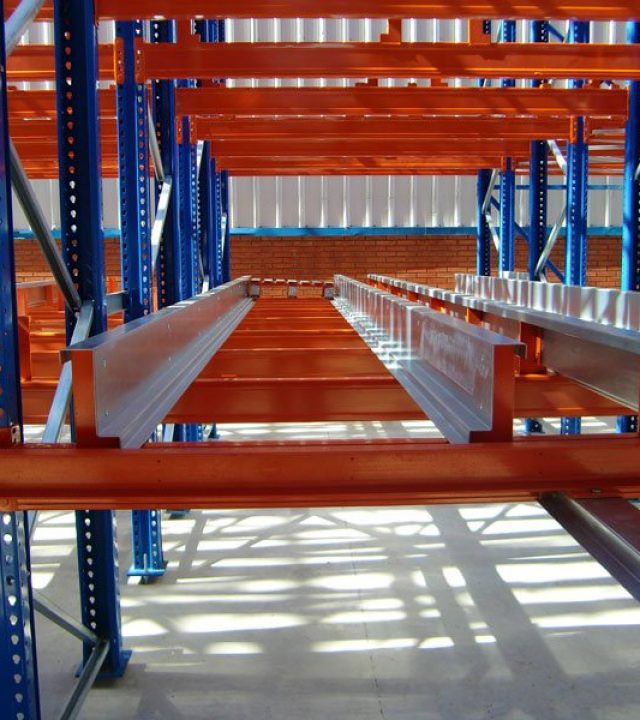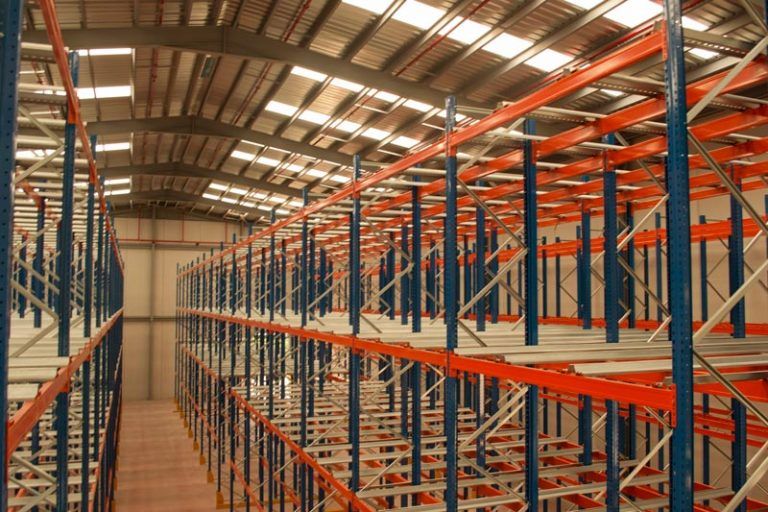Shuttle racking system
Home » Industrial racking » Industrial racking for palletized goods » Shuttle racking system
Shuttle racking system
The shuttle system is a semi-automated storage system. It can be designed to be either the LIFO (loading and unloading on the same side) as well as FIFO (loading on one side and unloading from the other side).
Through this semiautomated compact storage system with shuttle trucks, the loading unit is moved by the shuttle within the channel, thus preventing the lift truck from driving into the racking structure.

Description
This system consists of racking frames joined by beams supporting the rails, which serve to store pallets in the depth and for the movement of the shuttle. The shuttle moves autonomously on the rails, putting the load into its corresponding location.
Due to the fact that the lift truck does not need to drive into the racking structure, the hadling times are reduced, increasing the storage capacity in depth. The risk of accidents or damage on the racking is dramatically reduced, warehouse workers optimize their movements and the operations in the warehouse are more optimized.
Advantages
- The operator can perform other functions while the shuttle car moves the load unit back into the channel, increasing productivity.
- Make use of 100% of storage locations and up to 90% of the warehouse surface, reducing the working time compared with a standard drive-in system.
- Medium / high product turnover.
- One SKU per channel.
- Fewer incidents as the lift truck does not enter the racking channels.
- The shuttle solution offered by Noega Systems is a universal solution that can be used by lift trucks of any manufacturer.

Know-How
This semi-automated solution consisting of a combination of components of conventional pallete racking and drive-in system, operated by a shuttle truck that moves the loading units within the channels.
The shuttle is controlled via a remote control, is transported by a lift truck and deposited on the level and row required. Once the shuttle is positioned with the loading unit on it, it lifts the pallet and moves it into the channel. Using sensors and readers, the pallet is positioned in the right spot. This operation prevents the lift truck from driving into the racking, as it is the case with drive-in racking systems.
The rails are supported on the racking structure, secured on the beams. The structure is dimensioned taking into account the weight of the shuttle car and the own forces caused by movement and displacement of the loading unit within the racking.



